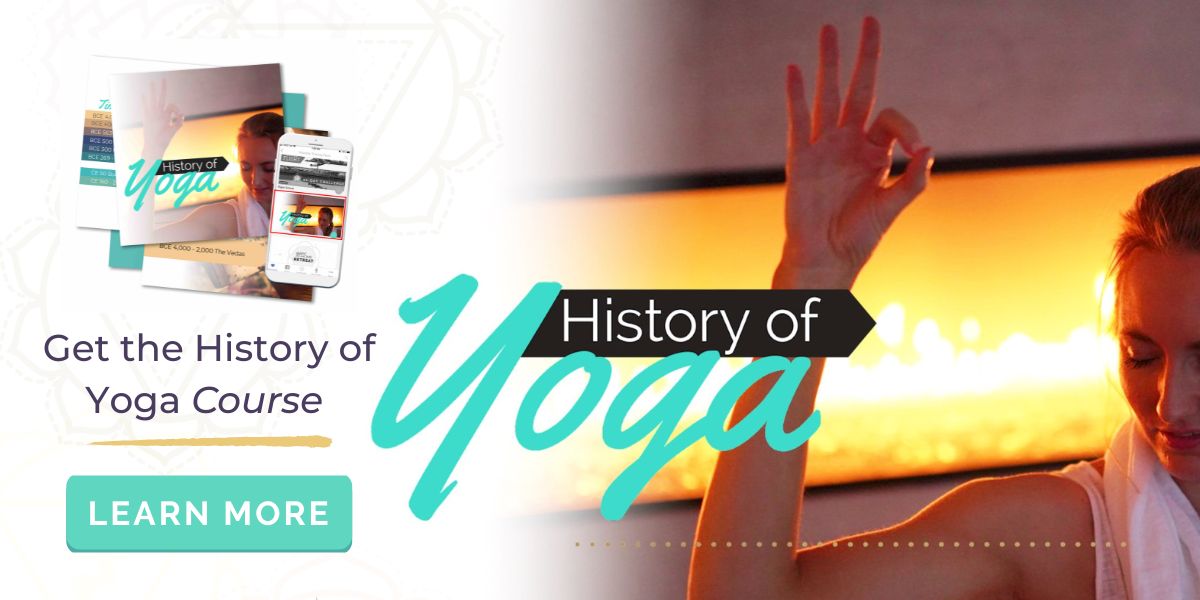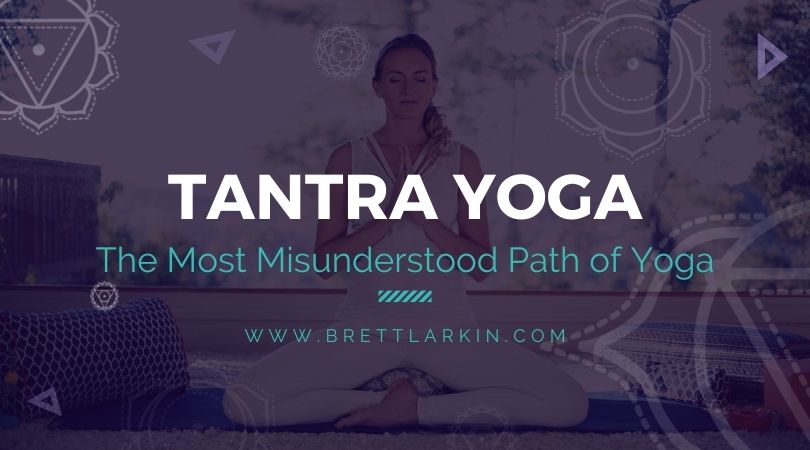
Everyone knows about Tantra, right?
I mean, it’s that witchy, black magic, sex cult that practices the Kama Sutra, right?
I hate to break it to that part of your brain that loves the provocative, but…
NOPE!
Those things aren’t actually traditional Tantra.
You’ll have to turn to some good ol’ fashioned reality TV for that kind of titillation.
So that leads to the questions…if that’s not Tantra, then what is? And why should I care?
Great questions!
You want to care because Tantra principles and techniques are likely part of what you currently practice!
And what is it?
Let’s explore that now and shed a bit of light on possibly the most misunderstood path of yoga—Tantra yoga. We’ll take a peek at what it is (and ISN’T), Tantric philosophy, schools of Tantra, and how to practice Tantra yoga today.
What is Tantra Yoga?
Let’s start with the meaning of the word Tantra.
You’ll most commonly read that the Sanskrit word Tantra means “to weave”, but in a historical and yogic context, scholars tend to define it as a scripture, a tool for expansion, and a system of practice.
Tantra is an Indian method of spiritual practice called “Tantras” (if it didn’t come from a Tantric text, it’s not Tantra). It originated in Sanskrit scriptures and emerged around 500 CE.
Many people don’t know this, but it influenced many Indian and Asian spiritual traditions and had a profound impact on yoga. Why isn’t this widely known? In part because Tantra and yoga are so interwoven today, it can be tough to distinguish one from the other.
Tantra was influential because it was one of the first spiritual traditions that also allowed women and lower-class initiates. Other traditions at the time were reserved for upper-caste male priests and ascetics. Those traditions sought the transcendence of the physical body and material world.
Tantra, on the other hand, embraced all aspects of the householder life (work, home, family, desire, and even a sex life) and aimed to merge the material and the spiritual, the immanent and transcendent—this was radical!
Tantra is a systematic, comprehensive, and practical system of spirituality that utilizes the whole human being (the breath, attention, imagination, body, etc.) to free the practitioner from ignorance and suffering.
Tantric practice consists of daily life, ritual, and yogic practices such as: yoga asana, pranayama (breathing exercises), mudra, mantra, yantra, bandha, chakra (energy center), meditation, visualization, nada, Kundalini practices, and nyasa (using the mind or hands to connect sounds/words to body-mind points).
Look familiar? That’s because much of what we think of as yoga has its direct or indirect root in Tantric techniques and principles! [Cue lightbulb moment!] Kundalini yoga, Mantra yoga, Hatha yoga, and Kriya yoga are examples of traditions that arose from Tantra.
Traditional Tantric Philosophy & Practice
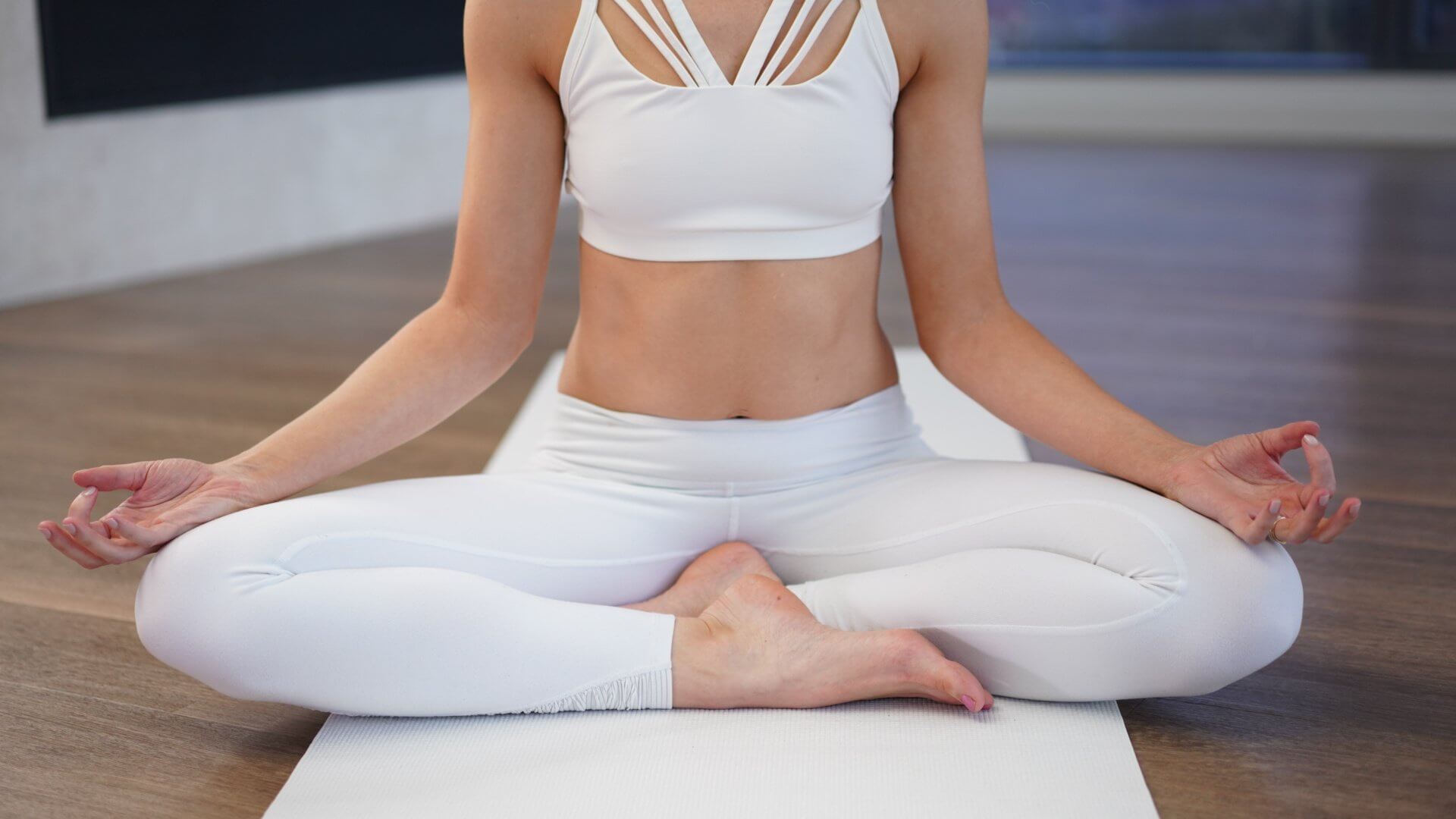
Scholars continue to study the deep and vast tradition of Tantra, including what is shared among its different schools. According to Tantra Illuminated by Christopher Wallis, some common threads are:
- The importance of ritual
- The centrality of deities, their ritual worship, deity mantras, and deity yoga (working with a particular aspect of the divine)
- The significance of mantras, mandalas, yogic meditation and visualization
- The importance of the teacher/guru, initiation, and esotericism (secrecy)
- Working with the subtle energy body (nadis and chakras) and Kundalini energy
- Polar symbology of god and goddess
If you’re like, wait, hold up, this doesn’t sound like what I’ve heard about Tantra, you’re probably thinking of the philosophy of left-hand Kaula Tantra that is commonly mistaken to represent all of Tantra (read more about that below).
Tantra vs. Neo-Tantra
The common misconception that Tantra is sex stems from hearsay and misunderstanding.
What people typically mistake as the whole of Tantra is “Neo-Tantra”, the modern, new-age Western take on Tantra also known as Modern Tantra, Navatantra, sacred sexuality, and Tantric sex.
In the early 1900’s, pioneers of what would later be called Neo-Tantra (John Woodroffe, Pierre Bernard, and Aleister Crowley) shared their interpretation of Tantra that was made without access to original sources and with an emphasis on sexual practice. This emphasis, plus some Tantric symbolic imagery of deities engaging in sexual acts, helped lead to the common misconception that Tantra means sex.
Classical Tantra, unlike Neo-Tantra, is based in Tantric texts, holds certain things as taboo, is primarily an individual practice, and is based on initiation into a lineage.
Neo-Tantra’s only shared feature with Classical Tantra, other than the name, is that sexuality doesn’t have to be separate from spirituality. While the Classical Tantra practitioner embraces sexuality as just one part of the human experience that can have a spiritual purpose, Neo-Tantra focuses on partner and sexual practices often for pleasure enhancement.
So what does Tantra yoga have to do with the Kama Sutra? Nothing! That’s another misunderstanding as the Kama Sutra literature relating to pleasure has been falsely interpreted as coming from Tantric yoga texts.
Schools of Tantra
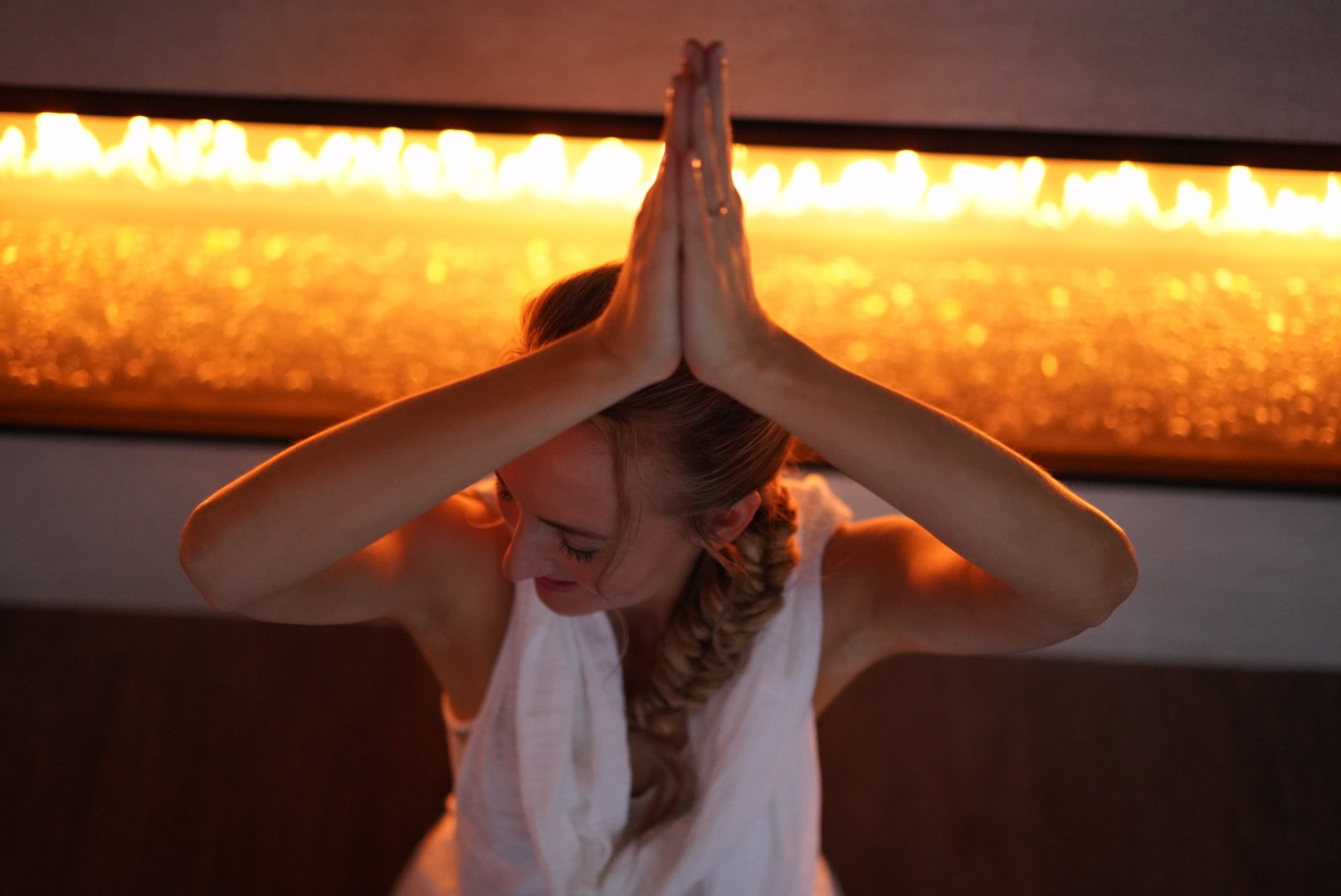
It’s commonly taught that there are three primary schools of Tantra.
Kaula
Swami Jnaneshvara Bharati describes the Kaula school as focusing on external Tantric practices to gain control over the lower desires and physical needs of the body. It is further divided into two paths, left (vama marga) and right (dakshina marga).
Left-Hand
- Commonly believed to be what “Tantra” is as a whole
- Non-dual (the individual soul is of the same nature as God, the universe, the divine)
- Suffering comes from ignorance of our inherent union with divine
- Liberation can be achieved during this lifetime and not just at death
- Acceptance of the body and “negative” mental states
- The importance of Shakti (the active divine force)
- Challenges social norms by including women, lower castes, taboo rituals and practices. Here’s where the “sexual yogas” come in. They’re found only in this school, done for a spiritual purpose, and led to the name sometimes used for this school, “Red Tantra”
- Requires a teacher to avoid pleasure pitfalls
Right-Hand
- Dual
- Focuses on purity (often called “White Tantra“)
- Rituals stay within social norms
- Liberation is the result of initiation and ritual practice and occurs at death
- Worshiped Shiva (not Shakti)
Mishra
Mishra means “mixture” and is the “middle” school of Tantra that includes the internal practice of meditation with external Tantric ritual practice to raise Kundalini energy.
Samaya
Swami Jnaneshvara Bharati says Samaya is the “highest” Tantric path that is entirely internal and focuses on the realm of consciousness. Samaya Tantric meditation practice might use third-eye (ajna) and crown (sahasrara) chakra focus to channel prana and Kundalini energies upwards to attain self-realization and liberation.
This school is said to be similar to Raja yoga (aka Classical yoga, the eight-limbed path of Patanjali’s Yoga Sutras, and Ashtanga yoga), but to contain more subtle practices.
How to Practice Tantra Yoga Today
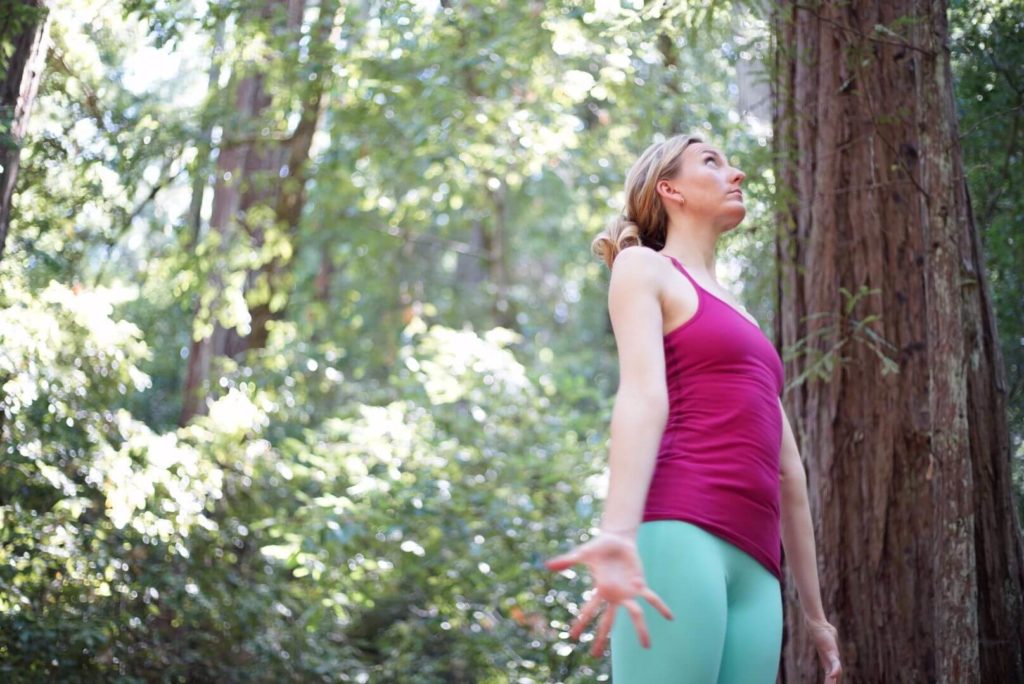
Having a guide who’s walked the path of Tantra is vital to benefiting from this tradition, so start there!
While you search for a teacher, I’ll also share a few ideas of what a Tantra yoga practice could look like. These are based generally in left-hand, non-dual Tantra. That is, the concept that the divine is within and all around us and that embracing all of the human experience can be a form of spiritual practice and connection with the divine.
Find a Reliable Teacher
First things first: Find a reputable guide to help you navigate the many Tantric teachings, practices, and pitfalls.
Tantra yoga instructors are less common, but there are still a few different ways to find a good instructor:
- Your in-person or online yoga studio might have Tantra yoga classes
- Search the web or Facebook for Classical Tantra teachers
- Consider joining a Tantra yoga teacher training
Sit Still and Breathe
It’s not a fancy type of breath work or meditation, but this simple technique helps rein in your mind-body energies and trains your ability to be with and relax into whatever is—one of the goals of non-dual Tantra practice.
Focus on long deep breaths and commit yourself to a few minutes of stillness as you practice being with the physical sensations, impulses, thoughts, and emotions that arise.
Find the Sacred in the Mundane
Practice “waking up” and turning off autopilot during an activity you normally don’t pay attention to like brushing your teeth.
Observe your sensations. Notice where your mind takes you. Perform the activity intentionally. Revel in your ability to be a manifestation of the divine having this unique experience (i.e. in this moment, no one else gets the unique pleasure of brushing your teeth).
See the Divine in All Things
When you meet someone in person or online, practice seeing them through the perspective that they are an expression of the divine. Spend some time in nature and see everything around you as a manifestation of pure consciousness.
Expand this practice to all that you come across in daily life.
Embrace All Experiences
Next time you feel a challenge, notice your habitual emotional reaction and whether there is a desire to push discomfort away or label it as “bad” or something you “shouldn’t” be experiencing.
Bring your awareness to your heart center then anchor into the physical sensations of your emotions and let them move. Witness and release narratives and judgements about your experience.
Explore viewing your ability to have such a rich, multi-layered experience as being as much of a blessing as experiencing joy. (This is advanced level btw, but Tantra practitioners achieve it in time!)
Next Steps
- If you’re interested in practical kriya yoga as a way to improve your daily life and relationships, check out my Yoga for Self Mastery course.
- Order my Yoga Life book for a practical guide to creating balance in your life through yoga.
- Check out my YouTube channel and find some yoga classes that you can try out for yourself!
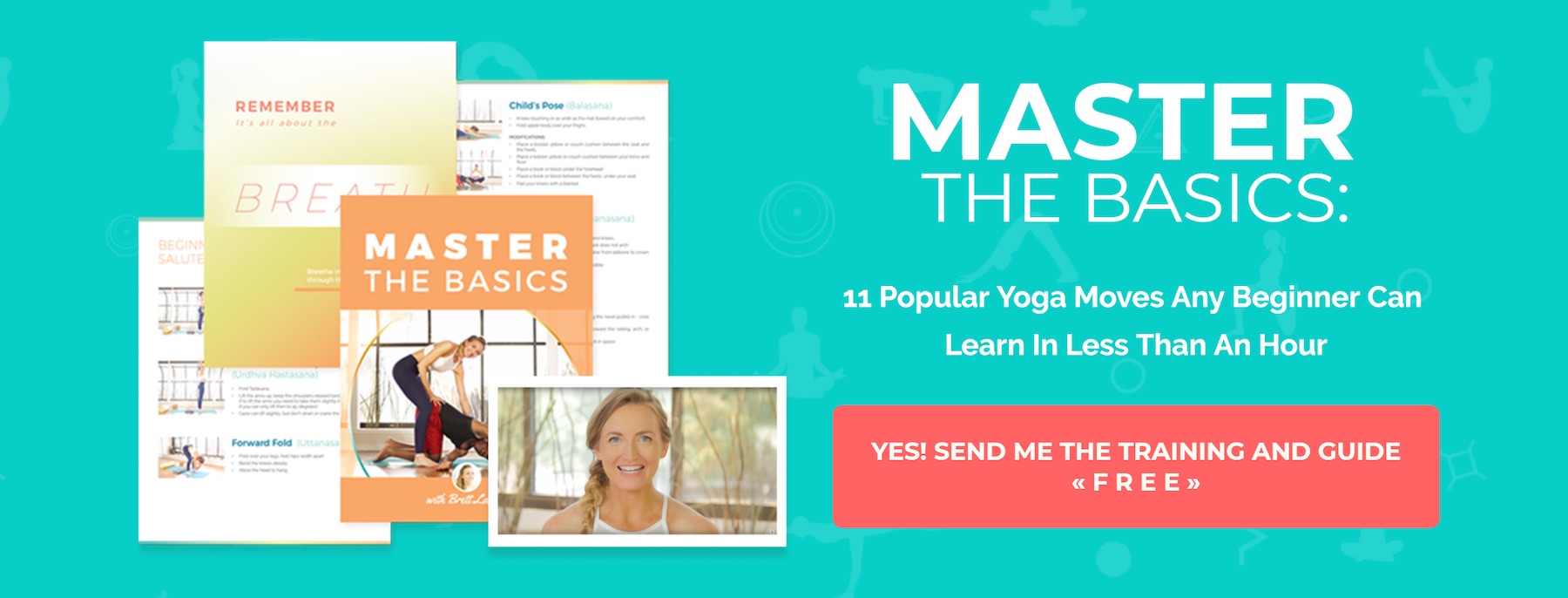
Learn how to do 11 of the most popular yoga poses correctly. Free video + PDF download.

YOU MIGHT ALSO LIKE
- What Is Somatic Yoga? Everything You Need To Know
- What is Kriya Yoga? The Philosophy and Practice
- Try This 30-Minute Yoga Nidra Script for Deep Sleep and Relaxation [+ Video]
- 9 Fierce Kundalini Yoga Poses to Light Your Inner Fire
- Tantra Yoga: The Most Misunderstood Path of Yoga
- Styles and Types of Yoga: The Complete Beginner’s Handbook
- What is Hatha Yoga? The Origins, Definition, Poses, & Practice
- What Is Trauma Informed Yoga And Should I Get Certified?
- How To Do High Lunge Pose
- 10 Yin Yoga Poses To Melt Away Stress (For Beginners)
- Amazing Benefits of Ashtanga Yoga That Your Studio Won’t Teach You
- Earthing Yoga 101: 6 Poses To Connect With The Earth (Root Chakra)
- Find A Gentle Yoga Sequence That Anyone Can Do
Learn how to do 11 of the most popular yoga poses correctly. Free video + PDF download.


